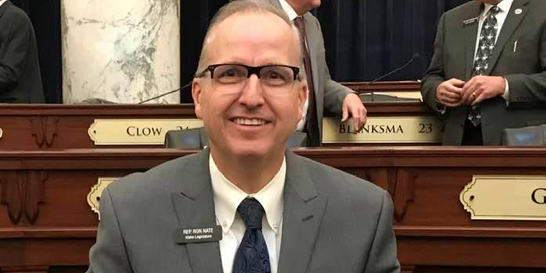(Jp Cortez, Sound Money Defense League) The recent explosion of money printing and debt-funded spending by the U.S. in response to the Covid-19 pandemic has sparked a renewed interest in the key role gold and silver play in hedging against systemic risks.
That’s why a group of Idaho legislators are working to secure a role for the monetary metals in hedging the Gem State’s government reserves.
Introduced by Representative Ron Nate (R-Rexburg) and Senator Steve Vick (R-Dalton Gardens), House Bill 7 would permit – but not require – the State Treasurer to hold some portion of state funds in physical gold and silver to help secure state assets against the risks of inflation and financial turmoil and/or to achieve capital gains as measured in Federal Reserve Notes.
The Idaho Treasurer is currently handcuffed when it comes to investment choices. State statutes provide extremely limited options for holding, managing, and investing Idaho’s “idle moneys” (which currently amount to several billion dollars).
As a result, Idaho’s reserves are invested almost exclusively in low-yielding debt paper – such as corporate bonds, tax-anticipation notes, municipal bonds, repurchase agreements, CDs, treasuries, and money market funds. Some refer to these instruments as “return free risk.”
These debt holdings appear to have low volatility, but they carry other risks – not the least of which is pernicious inflation and the steady erosion in real value of principal, coupled with interest rates that are negative in real terms.
An allocation to gold and silver provides a hedge against inflation, debt default risks, stock market declines, and volatility – and it historically increases overall returns. Gold and silver do not have the default or loss of purchasing power risks that bonds or other debt instruments carry.
Idaho House Bill 7 simply adds the authority to hold physical gold and silver directly – and in a manner that does not assume the counterparty and default risks involved with other state holdings.
Meanwhile, H7 does not grant any authority to buy stocks, futures contracts, or other gold and silver derivatives. The authority is confined to physical gold and silver, directly owned by the state and stored nearby in secure bailment.
Protecting State Funds with Sound Money a Growing Trend
A few other forward-thinking states are examining ways to implement a modest allocation of state funds to gold and silver.
The Texas Teacher Retirement Fund owns close to $1 billion in physical gold. Recently, the Ohio Police and Fire Pension Fund (currently valued at more than $15 billion) approved a 5% allocation to the yellow metal.
This year, South Carolina will consider the feasibility and efficacy of an in-state depository to securely store gold, silver, and other metals for the state’s reserves and other investments.
In 2019, Wyoming considered legislation to affirm the treasurer’s ability to invest reserve, trust, and pension funds in gold and silver. Wyoming is expected to consider this measure again in 2021.
The monetary metals can provide states with a meaningful way of hedging taxpayer funds against debt default risks, stock market declines, the federal policy of perpetual Federal Reserve Note devaluation. And a gold allocation has historically boosted overall investment returns while also reducing volatility.
An allocation to physical gold and silver fits squarely within the objective of protecting state funds against financial risks and would logically be included on any list of safe investment holdings.
The Sound Money Defense League supports this measure and looks forward to working with Idaho legislators to ensure the State Treasurer has the authority to invest state funds in sound money…Original Source…
Jp Cortez is a graduate of Auburn University and a resident of Charlotte, North Carolina. He is the Policy Director of the Sound Money Defense League, an organization working to bring back gold and silver as America’s constitutional money. Follow him on Twitter @JpCortez27.

